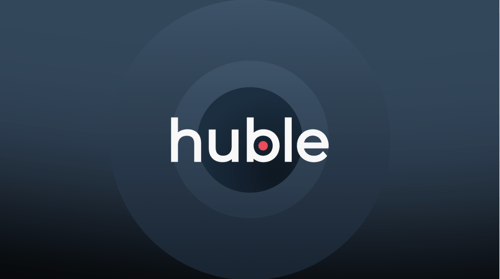You want to create a new website - but have you thought enough about your website strategy? When creating a new website, most people focus all their efforts on the build - which is actually the easy part - and little time on the strategy behind it. In this blog post, we list five areas of strategy you can't afford to ignore when creating your new website.
In 2020, just “building a website” is not enough — you have to think about the content you create, how your website is designed, the terms you optimise pages for and who your ideal audience are. It's this strategic planning and research that helps you produce a high-performing website that meets the expectations of visitors and gives them a great experience. After all, according to Forbes, customers who have a bad experience are 88% less likely to return.
That’s not a statistic you want to be at the wrong end of.
Here are five areas of strategy you can’t afford to ignore when creating your new website:
1. Stakeholder research
Performing stakeholder research ensures that your website is built to help all of your teams, not just marketing. Each team will want something different from the site and have valuable insights to share. For instance, while marketing teams may want the website developers to prioritise call-to-action placements and page layouts to optimise conversions, overloaded customer service teams may ask for an FAQ page that lowers their daily workload.
In today’s world, websites should cater for more than just lead generation — they should also consider sales assistance and customer service aspects. Stakeholder research makes this possible.
2. Keyword research and topic cluster research
Keyword research is essential when building a new website. If it’s not well-optimised, no one will find it. However, just optimising your website for specific keywords alone is no longer enough to stay ahead of Google’s ranking factors. If you want to occupy the top positions on results pages, topic cluster research is vital.

Topic clusters — groups of related content linked together through a central pillar page — help improve your website’s architecture while demonstrating your expertise on a specific subject.
You can access our 30-minute webinar on Topic Clusters here.
From a keyword perspective, the pillar page targets a broad term — something you want to be known for — while the cluster content targets related/semantic long-tail variants of that term, driving qualified organic traffic to your content. As people find your cluster content, and because it’s linked to and from the main pillar page, the pillar page and its linked assets receive an “SEO boost”, rising in the rankings.
But that’s not all — because the content is interlinked, Google can not only crawl your website more efficiently, it can also recognise the value of your pillar page (as other pages link to it) and will reward it accordingly.
Planning and using topic clusters is essential to have any chance of being found online and demonstrating your understanding of a topic. If you can answer the main questions your prospects have regarding a specific issue, they’ll be more likely to work with you in the future.
Read more about the topic clusters and their impact in this HubSpot post, Topic Clusters: The Next Evolution of SEO.
3. Key page strategy
A good-looking page isn’t necessarily a successful one. There needs to be a point to every page, and a focus for every element on it, to drive your target user action. What is the main thing you want someone to do on that page? A key page strategy helps you define that, and plan how to make it happen.
For example, if your goal is to generate leads, you’ll design your page to capture personal information about a prospect in exchange for valuable content. Meanwhile, a page designed to drive sales would prioritise differently — focusing instead on how your product or service can solve their challenges, and how they can subscribe or buy.
4. Page personalisation plan
How can you personalise the user experience for each of your visitors? There’s no reason a prospect needs to see the same content as a client. Tools such as HubSpot CMS Hub’s Memberships allow you to deliver personalised, targeted web content to specific visitor segments based on what you know about them. You could even offer private members-only portals.
Imagine greeting your first-time visitors with targeted, contextual messaging based on their location? And if they’re a returning visitor, greet them by name and offer relevant content or prompts based on their previous behaviour on your website. Considering these possibilities before you start building, and working them into your strategic plan, will keep your web project efficient and driving for maximum impact.
5. Backlog management
Thought about what you’ll do once your website is live? Nobody today can afford to sit back and relax if they’d like to keep their website at the leading edge. As you’re working on your website build, you need to be thinking about your backlog — your to-do list of site updates and expansions that you will tackle once your website is live. These are the “nice-to-haves” that may have been left out from your first go-lives, such as additional content or added functionality. With some strategic planning, your website will stay fresh and growing for years to come.

A good website development methodology to use is Growth-Driven Design (GDD). GDD focuses on building a small, but high-impact “launchpad” website in 13 weeks. Typically, 20% of your website drives 80% of your traffic, so with GDD you focus on building/recreating your best website pages, i.e. those that will drive organic traffic and conversions, and go live with those first.
You then agree to add new website pages (determined by priority) monthly and use the data you have accumulated since go-live to make changes to your launchpad website. This is the best and most strategically effective way to create a powerful, lead-generating website.
Another great thing about GDD is that it enables you to spread the cost of a website development project over several months, rather than lump-sum payments upfront and upon completion.
Why not talk to us if you want help?
At Huble Digital we believe in building high-performing websites on the strong foundations of a strategic plan. We’ve found it delivers better results. And that’s what we’re here for — to help enterprise businesses adapt and thrive, with cutting-edge digital tools and data-driven strategy.
If you want to help you transform your website into your most valuable sales, marketing and customer service tool, check out our marketing and growth services for more information.









-3.png?width=500&height=320&name=Matt%20-%20imagery%20bank%20(8)-3.png)

